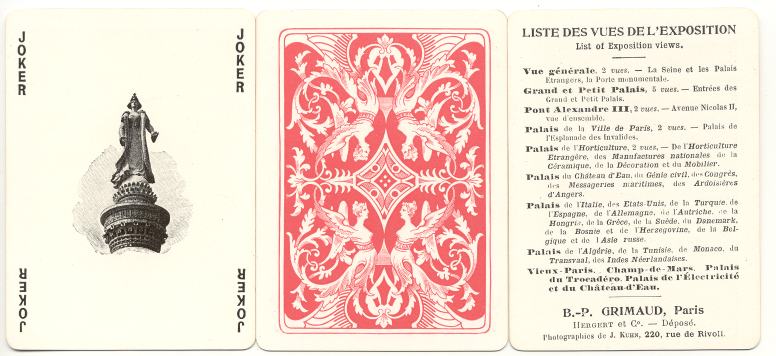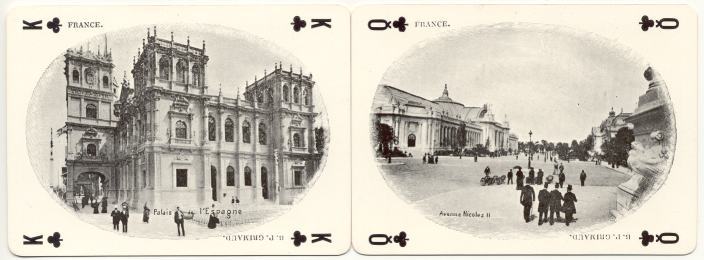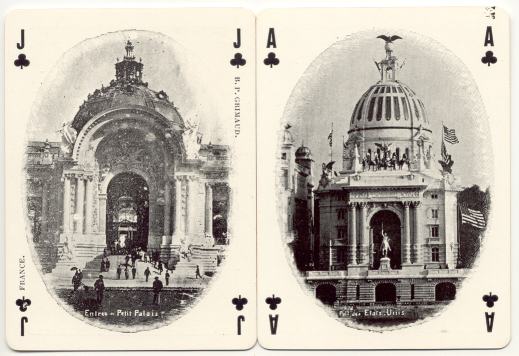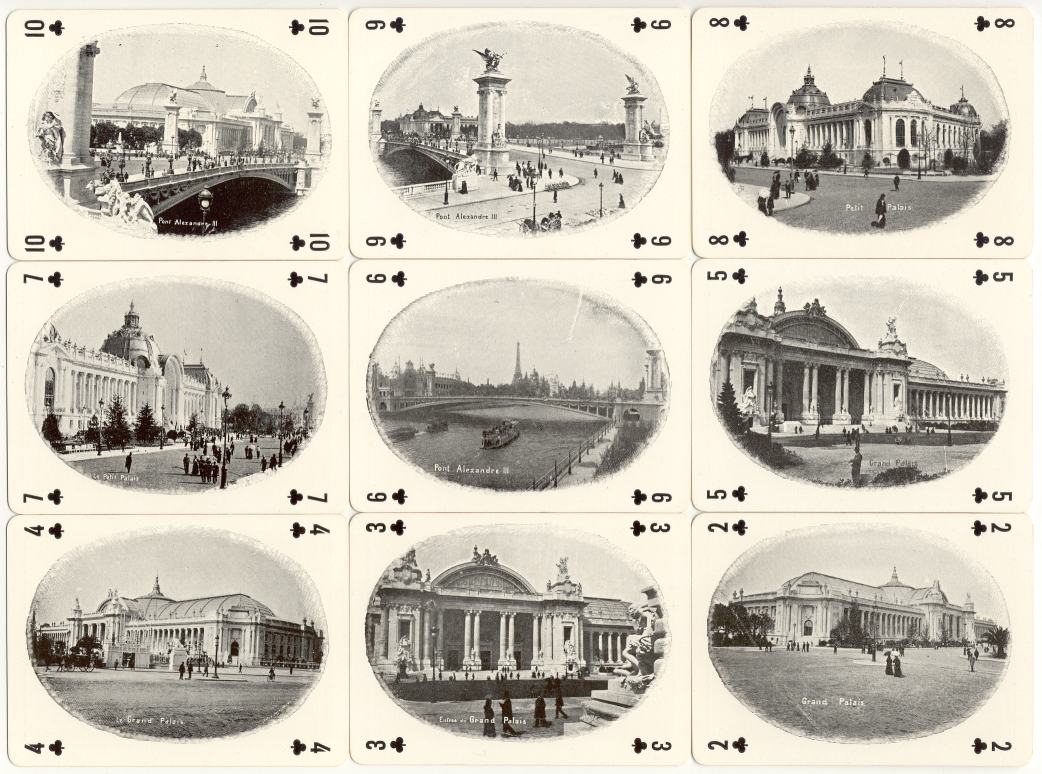
joker, backdesign and extra card.
PARIS WORLD EXPOSITION 1900
INTRO
The idea for this xpo came on June 4th 2007, during the last day of a short stay in Paris. We had just found an antique Grimaud deck there, that was published as a souvenir deck for the World Exposition in 1900 in Paris. The deck consists of 52 cards, a joker and an extra card with information about the deck and cards.

joker,
backdesign and extra card.
As we had
just walked along the Champ de Mars ourselves 3 days before and -until we found the
deck- had not been aware of the fact that this
large field had once been the main exposition complex more than a century ago, we thought that we would try to bring this event to
life again by showing the complete deck.
A second deck, that was already in our
collection for some time, was chosen to assist in this mission. The deck was
published by Mijoke in 1998 as "Le Globe Celeste"and shows pictures
from several French World Expositions from 1855 until 1900. All the courts show
pictures of the 1900 exposition (see page 6).
In May 2024 I could finally add the only missing deck here, the "Paris Exposition
Souvenir Playing Cards", printed by the USPC and published by Tom Jones
from Denver in 1900 (see page 5).
THE PREPARATIONS
Paris had already organized 4 world expositions before: in 1855, 1867, 1878 and 1886. So when the rumor was, that Germany was planning to organise a world exposition in Berlin in 1900, the French immediately took action.

the
Spanish Palace and the Avenue Nicolas II
Already in July 1892 the announcement was made and a year later a commission was formed to make plans for such an event to take place in Paris. In September 1893 Alfred Picard was appointed as commissioner general. The idea was to make the exposition a retrospective of all the advances and achievements in art, science and technology of the closing century. This required an exposition of unprecedented dimensions. In 1896 a law was passed in the French parliament on the staging of the exposition.

the
entry of the Small Palace (of Arts) and the Palace of the United States
The dimensions of the project had expanded to such an extent since the exposition of 1867 that it was no longer conceivable to stage the event in a single building erected especially for the exposition, as had been the case thirty years beforehand. Picard's proposal was to link 4 originally unconnected districts by incorporating the course of the Seine. The construction of the Pont d'Iéna connected the area around the Trocadero with the Champs de Mars situated on the opposite bank of the Seine to form a main exposition complex. The site continued along the banks of the Seine up to the area in front of the Hôtel des Invalides, where it was planned to build a second center around the river's axis. A newly built esplanade led from the Hôtel des Invalides and over the new Seine bridge, the Pont Alexandre III, to the opposite bank. The continuation of the esplanade, the Avenue Nicolas II, extended the route past the two planned palaces of art to the Champs Elysées - a magnificent street system which soon received praise as a brilliant invention for the exposition. The Parc de Vincennes, situated outside of Paris, played rather a secondary role as an additional exhibition site for the fields of agriculture and transport, particularly the railways and the newly invented automobile.
The
numbercards of the Clubs suit are all dedicated to the Pont Alexandre III and
the two palaces of art, the Grand Palais and the Petit Palais
.
Exposition space:
120 ha in Paris and 110 ha in Vincennes (railway, agriculture and sporting
competitions).
Visitors: 50,860,801.......... 48,368,504 in Paris and 2,492,297 in Vincennes.
-1- -2-
-3- -4-
-5- -6-
XPOHOME